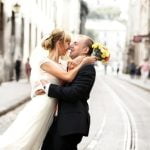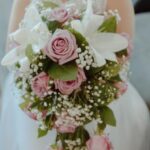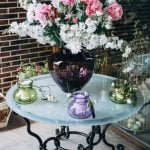Addressing a wedding card is an essential part of the wedding etiquette, and it is crucial to get it right. Knowing how to address a wedding card properly reflects your respect and admiration for the couple, making them feel special on their big day. Whether it’s for a traditional or modern wedding, understanding the proper way to address a wedding card will ensure that your message is received with warmth and appreciation.
The tradition of addressing wedding cards has deep roots in etiquette, and it is important to understand the traditional rules before considering any modern alternatives. From addressing married couples to unmarried couples, same-sex couples, and blended families, each situation requires thoughtful consideration and attention to detail. It’s not just about getting the names right; it’s also about acknowledging and honoring the relationship between the couple.
In this article, we will explore the traditional etiquette of addressing wedding cards, including addressing them for married couples and unmarried couples. We will also delve into addressing wedding cards for same-sex couples and blended families. Additionally, we will discuss common mistakes to avoid when addressing wedding cards and provide modern alternatives for those looking to embrace non-traditional approaches. Let’s dive into the intricacies of addressing wedding cards with grace and finesse.
Understanding the Traditional Etiquette of Addressing Wedding Cards
When it comes to addressing wedding cards, it is important to follow traditional etiquette as it reflects respect and consideration for the couple. The first thing to consider is how well you know the couple and their preferences. If they are very traditional, it may be best to stick to formal address and titles. However, if they are more modern and casual, you have a little more flexibility.
For a married couple, the traditional way to address a wedding card is to use both of their full names, including titles like “Mr.” and “Mrs.” or “Dr.” if applicable. For example: “Mr. John Smith and Mrs. Sarah Smith.” It’s important to ensure that the order of the names is based on social norms, so do your research if you’re not sure.
When addressing a wedding card for an unmarried couple who live together, it is correct to write both of their names on the envelope in alphabetical order according to their surnames. This reflects equality and respect towards both individuals.
It’s always important to take into account any special circumstances such as same-sex couples or blended families when addressing a wedding card in keeping with traditional etiquette.
| Traditional Addressing | Example |
|---|---|
| Married Couple | “Mr. John Smith and Mrs. Sarah Smith” |
| Unmarried Couple | “Ms. Sarah Johnson and Mr. John Smith” |
How to Address a Wedding Card for a Married Couple
When addressing a wedding card for a married couple, it is important to follow traditional etiquette while also showing respect and consideration for the recipients. The correct way to address a wedding card for a married couple is by using both of their full names. It is customary to use the husband’s first and last name followed by the wife’s first and maiden name.
For example, “Mr. John Smith and Mrs. Jane Doe.” If the wife has taken her husband’s last name, then it is appropriate to use her married name.
Consider Using Titles
To add an additional level of formality, consider using titles when addressing a wedding card for a married couple. This can include using “Mr. and Mrs.” before both of their names as in “Mr. and Mrs. John Smith.” However, if the couple has different professional titles such as Dr. Judge, or Military rank, it is important to use these titles accordingly.
Personalize the Message
In addition to addressing the envelope correctly, take the time to personalize the message inside the wedding card for the married couple. Consider sharing warm wishes or memories you have with them as a couple. This personal touch will show that you put thought into your message and make it more meaningful for the recipients.
By following these guidelines on how to address a wedding card for a married couple, you can ensure that your gesture is well-received and appreciated by the recipients. Taking the time to address a wedding card thoughtfully shows respect and consideration for the couple on their special day.
How to Address a Wedding Card for an Unmarried Couple
When addressing a wedding card for an unmarried couple, it’s important to do so in a respectful and appropriate manner. Here are some guidelines to follow:
1. Use both of their names: When addressing the envelope, make sure to include both individuals’ names on the same line. For example: “Ms. Jane Smith and Mr. John Doe.”
2. Be mindful of titles: If one or both individuals hold professional titles, be sure to include them when addressing the card. For example: “Dr. Sarah Johnson and Mr. David Lee.”
3. Consider the order of the names: If one person is better known than the other, consider placing their name first on the envelope. However, if they are equally known by the recipient, alphabetical order is appropriate.
It’s essential to remember that both individuals should feel equally recognized and respected when addressing a wedding card for an unmarried couple. Taking the time to carefully address the envelope shows thoughtfulness and consideration for both individuals as they celebrate their special day together.
Remembering these guidelines ensures that you address a wedding card for an unmarried couple with proper etiquette, showing your respect for each individual as they embark on this significant milestone in their relationship.
Addressing Wedding Cards for Same-Sex Couples
As society becomes more inclusive and diverse, it is essential to understand the proper etiquette for addressing wedding cards for same-sex couples. Whether you are close friends or family members of the couple, addressing the card in a respectful and considerate manner is important. Fortunately, there are guidelines and options available that can help ensure your wedding card is well received by the recipients.
When addressing a wedding card for a same-sex couple, it is important to use both individuals’ names on the envelope. For example, if one partner’s name is listed first on the invitation, their name should be listed first on the envelope as well. The traditional “Mr. and Mrs.” format may not be applicable here, so using “Mr. and Mr.” or “Mrs. and Mrs.” followed by their last names is an appropriate alternative.
Another option is to address the envelope using both partners’ first names without any titles, such as “Alex and Taylor Smith” or “Sam and Jamie Johnson.” This provides a casual yet respectful way of acknowledging both individuals without focusing on their gender or marital roles.
It’s important to remember that addressing a wedding card for same-sex couples should be done with sensitivity and respect. By following these guidelines, you can show your support for the couple while also respecting their identity and relationship.
Addressing Wedding Cards for Blended Families
When it comes to addressing wedding cards for blended families, it’s important to be sensitive and inclusive. With the increasing prevalence of blended families, it’s essential to navigate this situation with grace and thoughtfulness. Here are some guidelines on how to address a wedding card for a blended family:
1. Consider including everyone: When addressing the card, make sure to include all members of the blended family. This may mean including both sets of parents, step-parents, siblings from different marriages, and any other family members who are part of the household.
2. Use inclusive language: Instead of using traditional titles like “Mr. and Mrs.” consider using more inclusive language that acknowledges all members of the family. For example, you could address the card to “The Smith-Jones Family” or “The Smith and Jones Families.”
3. Be mindful of relationships: Take into account the dynamics within the blended family when addressing the wedding card. If there are strained relationships or sensitive situations, consider reaching out to the couple or a member of the family for guidance on how to appropriately address the card.
Addressing wedding cards for blended families requires tact and consideration in order to ensure that everyone feels recognized and included in this special occasion.
Remember that how you address a wedding card can have a lasting impact on the recipients, so taking the time to address it properly is well worth it in the end.
Common Mistakes to Avoid When Addressing Wedding Cards
When it comes to addressing wedding cards, there are some common mistakes that people often make without realizing it. It’s important to be mindful of proper etiquette when sending your well wishes to the happy couple. Addressing a wedding card incorrectly can leave a lasting impression for all the wrong reasons.
Misspelling Names
One of the most common mistakes when addressing wedding cards is misspelling the names of the couple. Whether it’s their first names or last names, it’s essential to ensure you have the correct spelling. Double-checking this detail shows that you’ve taken the time and effort to personalize your message.
Using Incorrect Titles
Another common mistake is using incorrect titles when addressing a wedding card. If one member of the couple has a title, such as “Dr.” or “Mrs.” it’s important to address them accordingly. Not paying attention to these details can come across as careless and inattentive.
Assuming Traditions
It’s also crucial to avoid assuming traditions when addressing wedding cards. For example, if you’re unsure whether the bride is taking the groom’s last name, it’s best to use both of their full names rather than making assumptions. This shows respect for their individual choices and avoids any potential awkwardness.
By being mindful of these common mistakes, you can ensure that your wedding card is addressed with care and consideration, leaving a positive impression on the happy couple.
The significance of correctly addressing a wedding card cannot be overstated, as it sets the tone for your well wishes and reflects your attention to detail and thoughtfulness. Following proper etiquette when addressing a wedding card will show that you respect the couple and their special day.
Modern Alternatives for Addressing Wedding Cards in a Non-Traditional Way
When it comes to addressing wedding cards, there are traditional etiquette rules that have been followed for many years. However, in modern times, many people are opting for non-traditional ways of addressing wedding cards to add a personal touch and reflect the diversity of relationships.
It is important to consider the relationship dynamics and preferences of the couple when addressing their wedding card, as it can make a lasting impression. Here are some modern alternatives for addressing wedding cards in a non-traditional way.
One modern alternative is to address the wedding card using informal titles or nicknames that the couple prefers to go by. For example, instead of using formal titles such as Mr. and Mrs. you can address the card to “Alex and Taylor Smith” or “Drake and Emma”. This adds a more personal touch and shows that you are familiar with the couple’s preferences.
Another non-traditional way to address a wedding card is by using gender-neutral language. Instead of using “Mr.” or “Mrs.”, you can use neutral terms like “Mx.” or simply use the first names of both individuals without any titles. This is especially relevant when addressing wedding cards for same-sex couples, as it acknowledges and respects their relationship without conforming to traditional gender norms.
Lastly, another modern alternative for addressing wedding cards in a non-traditional way is by incorporating cultural traditions or customs that are meaningful to the couple. If they come from different cultural backgrounds, you can consider incorporating their cultural titles or customs into how you address their wedding card. This shows respect for their heritage and adds a thoughtful touch to your gesture.
Conclusion
In conclusion, addressing a wedding card may seem like a small detail, but it holds significant importance in the overall wedding experience. By taking the time to follow traditional etiquette and address the card correctly, you show respect and thoughtfulness towards the couple. Whether they are married, unmarried, same-sex, or part of a blended family, knowing how to address the wedding card appropriately can leave a lasting impression and make the couple feel valued on their special day.
It is crucial to understand the traditional etiquette of addressing wedding cards, as this sets the tone for your relationship with the couple and reflects your attention to detail and respect for tradition. By following these guidelines, you can ensure that your gesture of sending a wedding card is executed with grace and sophistication.
While it is important to adhere to traditional etiquette when addressing wedding cards, there are also modern alternatives for those who prefer a non-traditional approach. It’s essential to strike a balance between tradition and personal expression when choosing how to address a wedding card. Ultimately, what matters most is that your message reflects genuine warmth and well-wishes for the couple as they embark on this new chapter of their lives together.
Frequently Asked Questions
What Is the Proper Way to Address a Wedding Envelope?
The proper way to address a wedding envelope is to write the full names of the recipients, including titles such as Mr., Mrs., Dr., etc. It’s also important to include the complete mailing address and use legible handwriting.
Do You Address a Wedding Card to the Bride and Groom?
When addressing a wedding card, it’s customary to address it to both the bride and groom. You can use the title “Mr. and Mrs.” followed by the last name of the couple, or you can use their individual names if they’re not yet married.
How Do You Write a Wedding Card for Mr and Mrs?
When writing a wedding card for Mr. and Mrs., you can begin by addressing them as such on the envelope and then continue with your message inside. You may want to express your well wishes for their marriage and future together and offer congratulations on their special day.

Welcome to my blog about home and family. This blog is a place where I will share my thoughts, ideas, and experiences related to these important topics. I am a stay-at-home mom with two young children. I hope you enjoy reading it! and may find some helpful tips and ideas that will make your home and family life even better!





